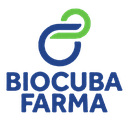Executive Secretary

IX Conferencia Científica Internacional sobre Desarrollo Agropecuario y Sostenibilidad
X Simposio de Agronomía
Resumen
Problemática: Existe la necesidad de buscar alternativas para suplir el déficit de nutrientes en las plantas de frijol común con el objetivo de incrementar el rendimiento agrícola y la producción nacional.
Objetivo(s): Evaluar el bioproducto de interés agrícola Fenol (EPP3) en la respuesta agronómica del frijol común en dos épocas de siembra.
Metodología: El estudio se desarrolló en la Cooperativa de Créditos y Servicios “José Antonio Echeverría” del municipio de Camajuaní, provincia de Villa Clara. Se evaluaron los indicadores morfológicos altura de las plantas y número de hojas, así como el rendimiento agrícola y sus componentes. A partir del área de las parcelas y el peso de las semillas de cada una de ellas, se realizó el cálculo el rendimiento agrícola para una hectárea.
Resultados y discusión: Entre el control relativo Fitomas-E (2%) y Fenol EPP3, no se presentaron diferencias significativas en la altura y número de hojas por planta con diferencias significativamente superiores con respecto al control absoluto. El número de legumbres por planta, número de semillas por planta y peso de semillas por planta fueron significativamente superiores en el tratamiento Fenol EPP3 con respecto a los controles relativo y absoluto. En las dos épocas de siembra el rendimiento agrícola con Fenol se alcanzó 1,4 t ha-1 aún en presencia del Magalurothrips isutatus Bagnal, superior a los controles.
Conclusiones: Las aplicaciones foliares del bioproducto de interés agrícola Fenol EPP3 al cultivo de frijol común cultivar ‘CUL-156’ incrementaron en rendimiento agrícola y sus componentes independientemente de la época de siembra.
Abstract
Abstract
Problem: There is a need to look for alternatives to supply the nutrient deficit in common bean plants with the aim of increasing agricultural yield and national production.
Objective(s): To evaluate the bioproduct of agricultural interest Fenol (EPP3) in the agronomic response of common bean in two sowing seasons.
Methodology: The study was carried out at the "José Antonio Echeverría" Credit and Services Cooperative in the municipality of Camajuaní, Villa Clara province. The morphological indicators, plant height and number of leaves, as well as agricultural yield and its components were evaluated. From the area of the plots and the weight of the seeds of each of them, the calculation of the agricultural yield for one hectare was made.
Results and discussion: The agricultural yield components number of legumes per plant, number of seeds per plant and weight of seeds per plant were significantly higher in the Fenol EPP3 treatment with respect to the relative control Fitomas-E (2%) and to the absolute control independently of the planting season. In the two planting seasons, the agricultural yield with Fenol EPP3 reached an agricultural yield of 1.4 t ha-1, even in the presence of Magalurothrips isutatus Bagnal, higher than the absolute and relative controls.
Conclusions: Foliar applications of the bioproduct of agricultural interest Fenol EPP3 to the common bean cultivar 'CUL-156' increased agricultural yield and its components regardless of the sowing season.
Sobre el ponente

Aydiloide Bernal Villegas

Discussion

